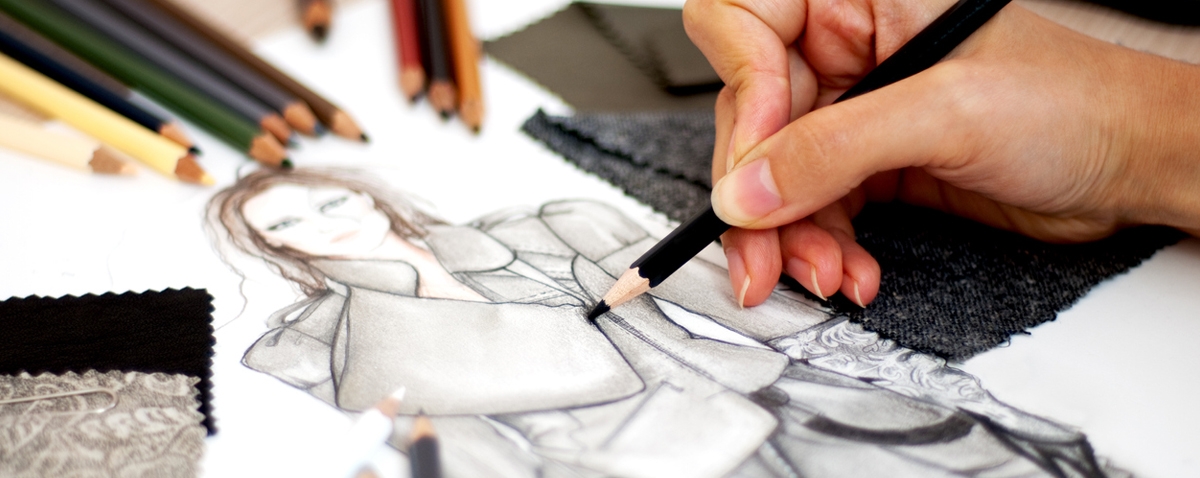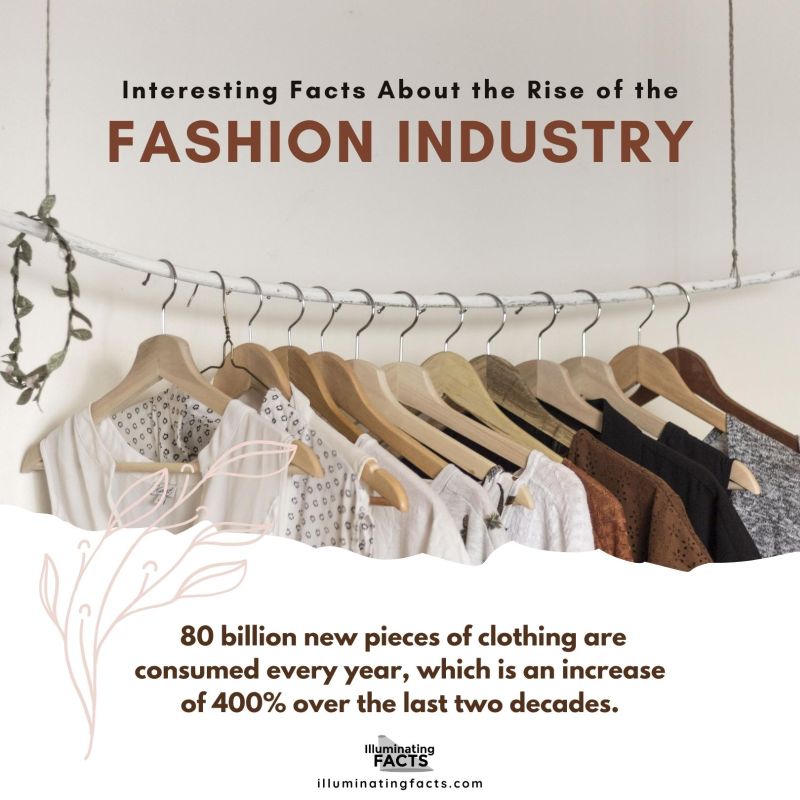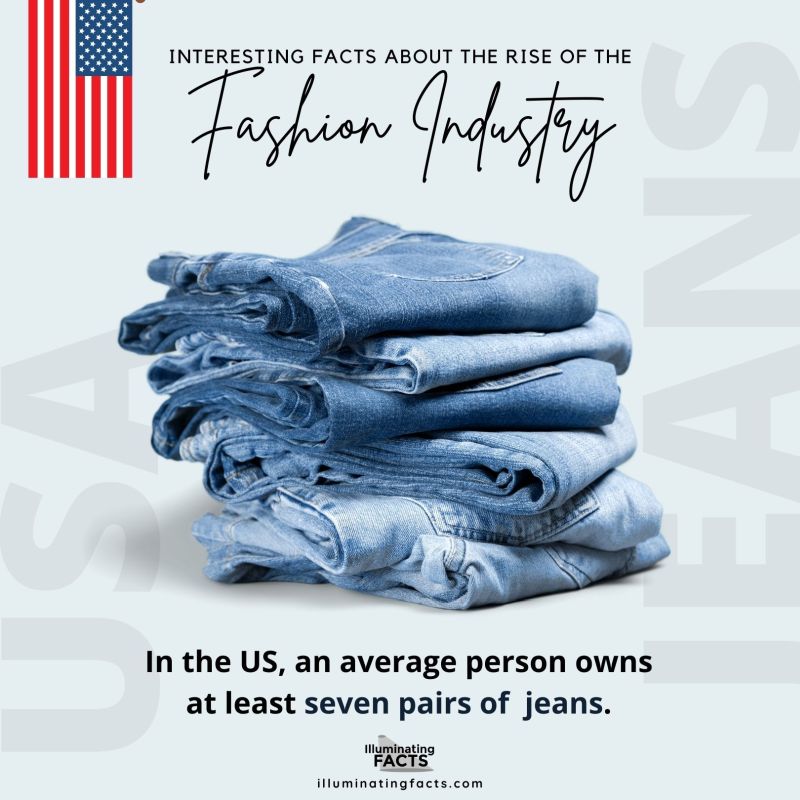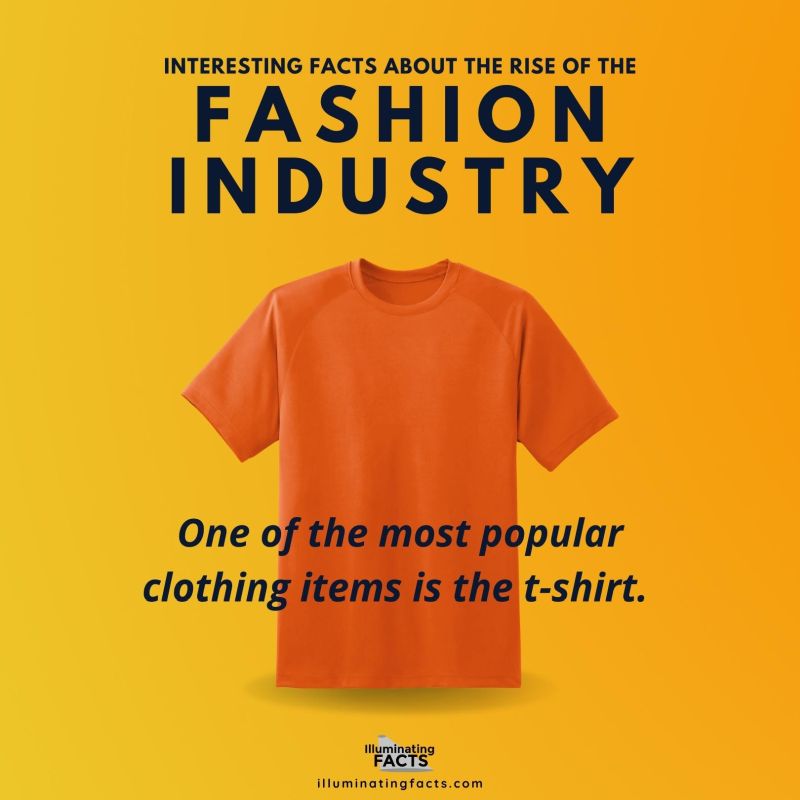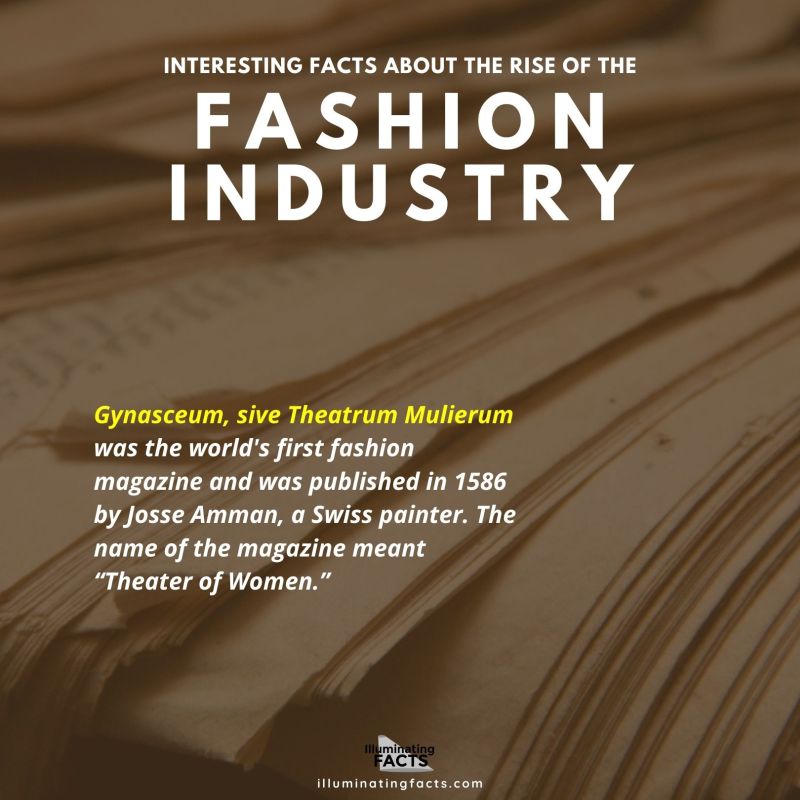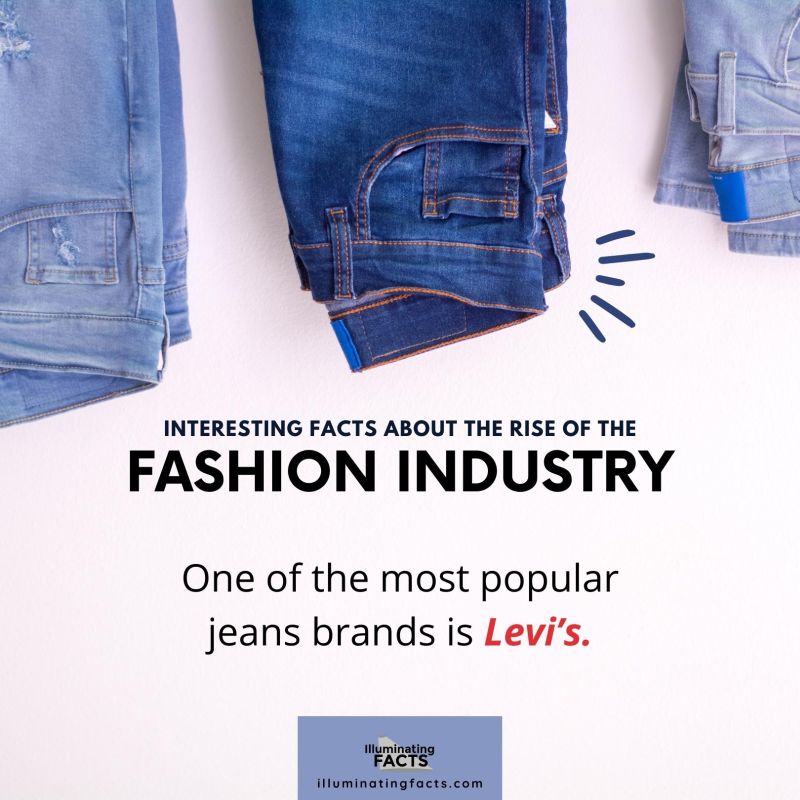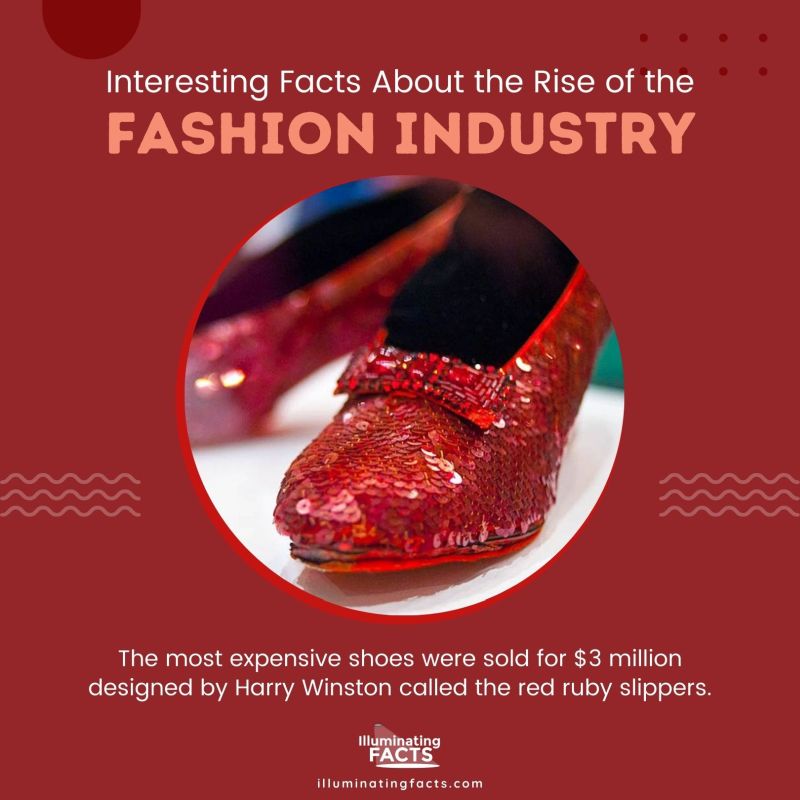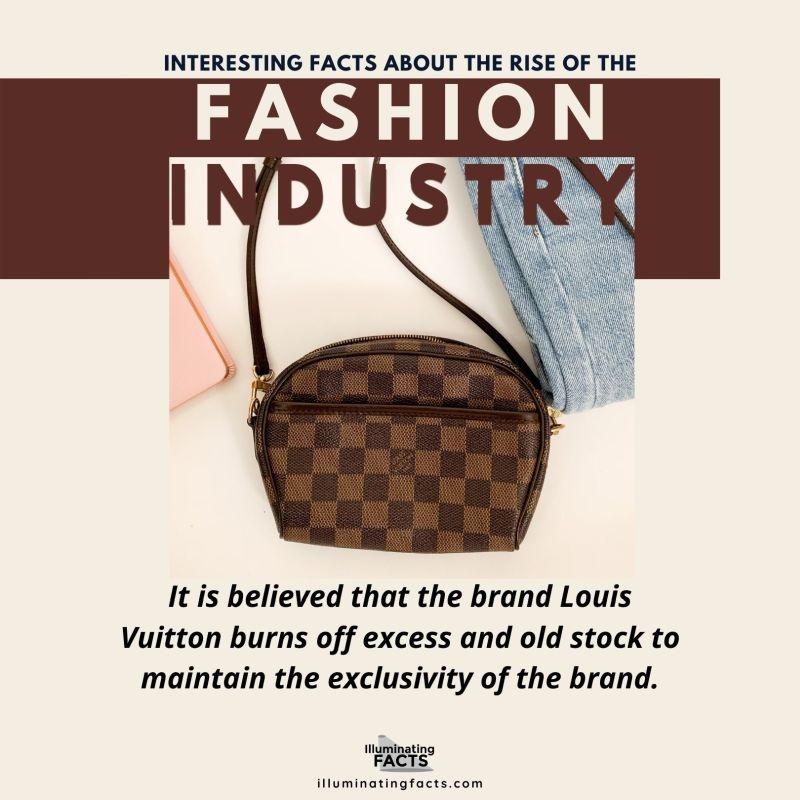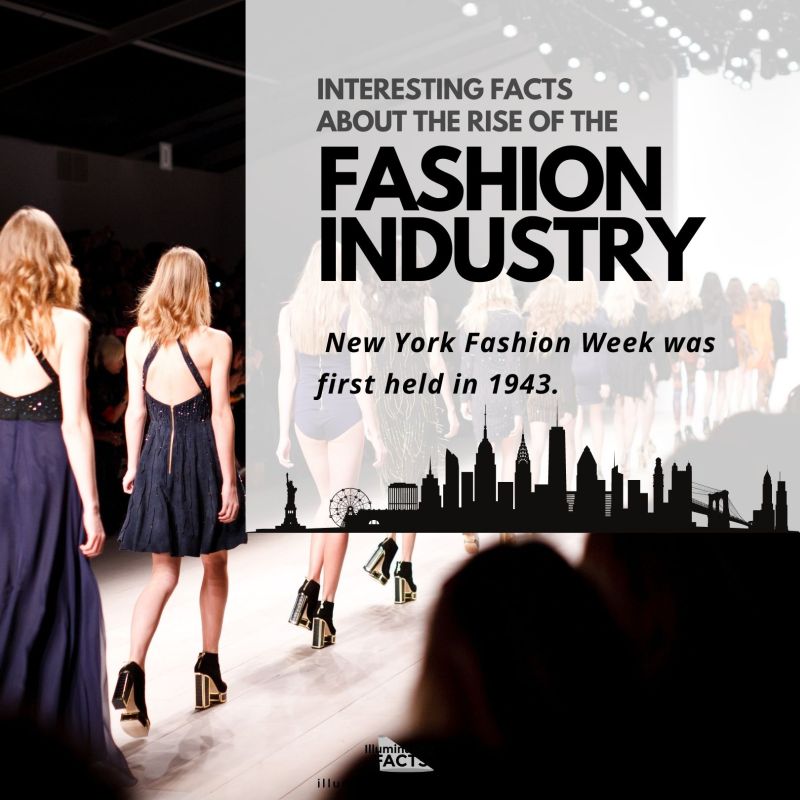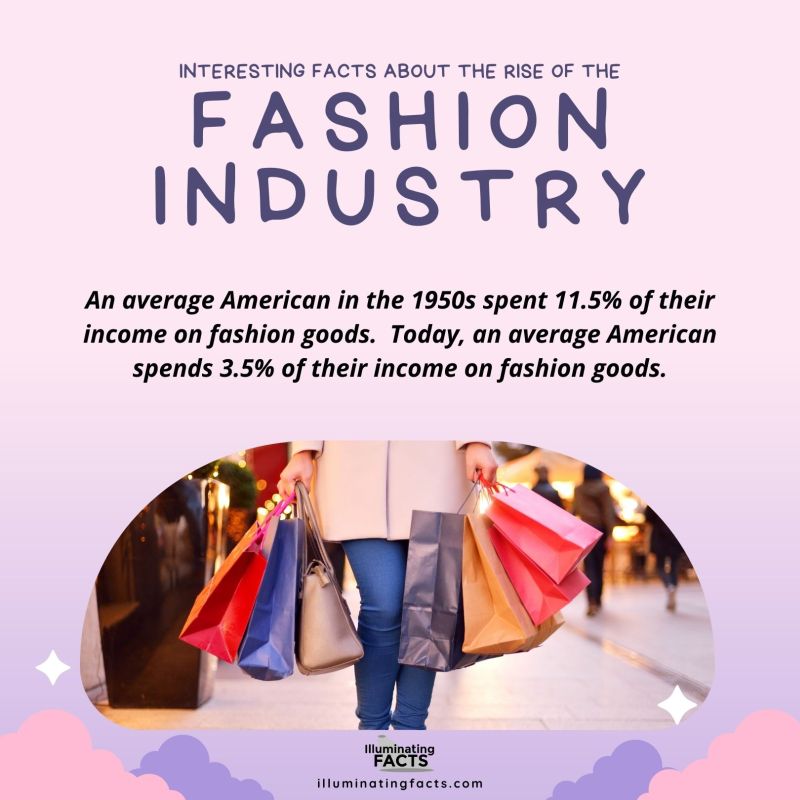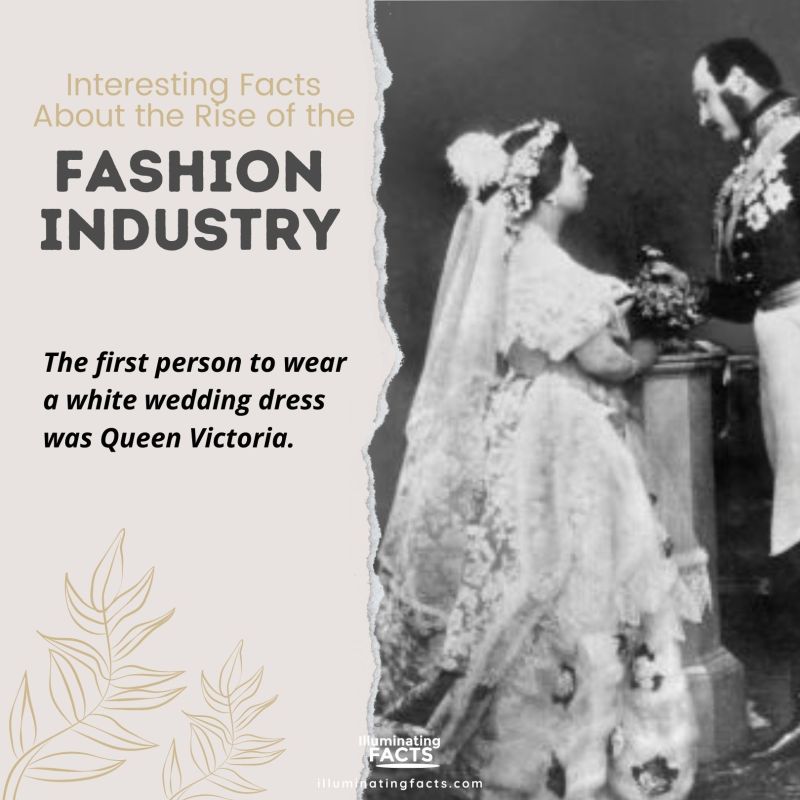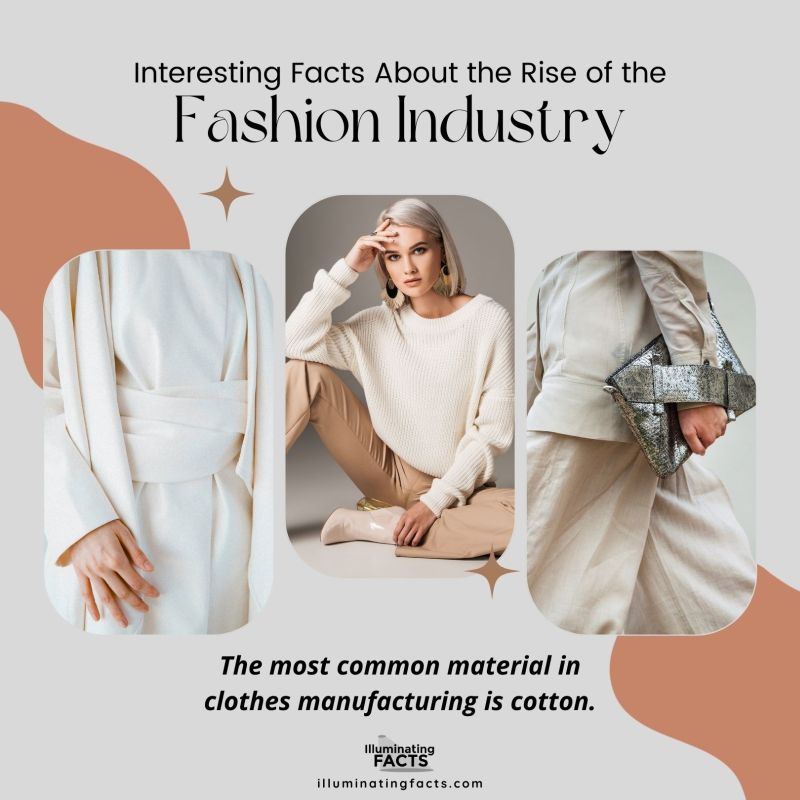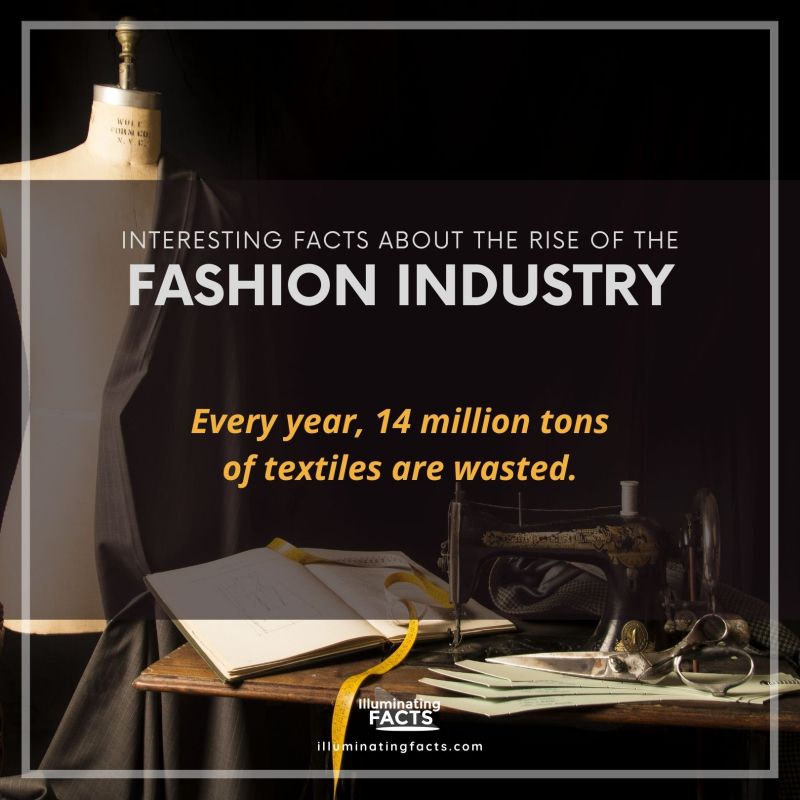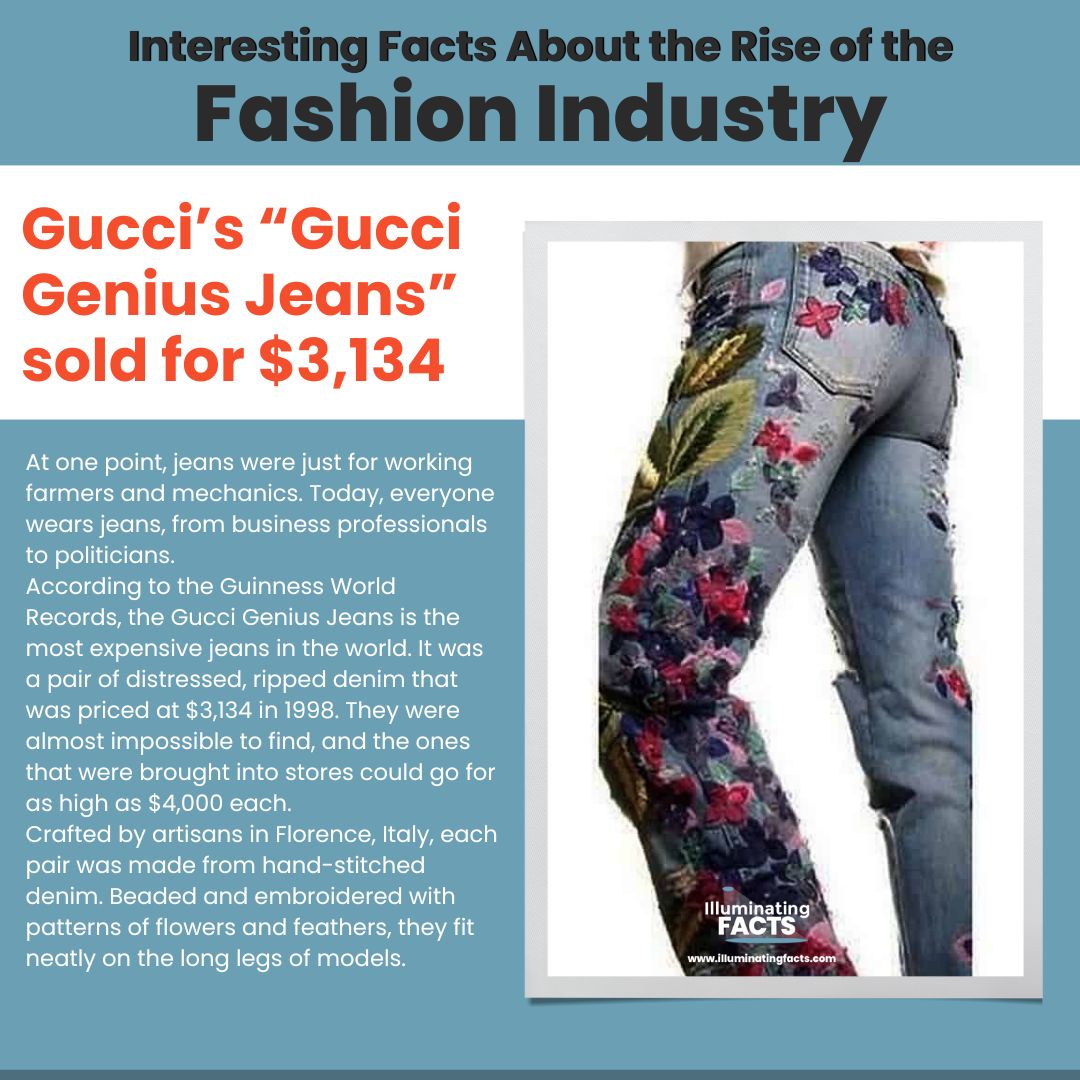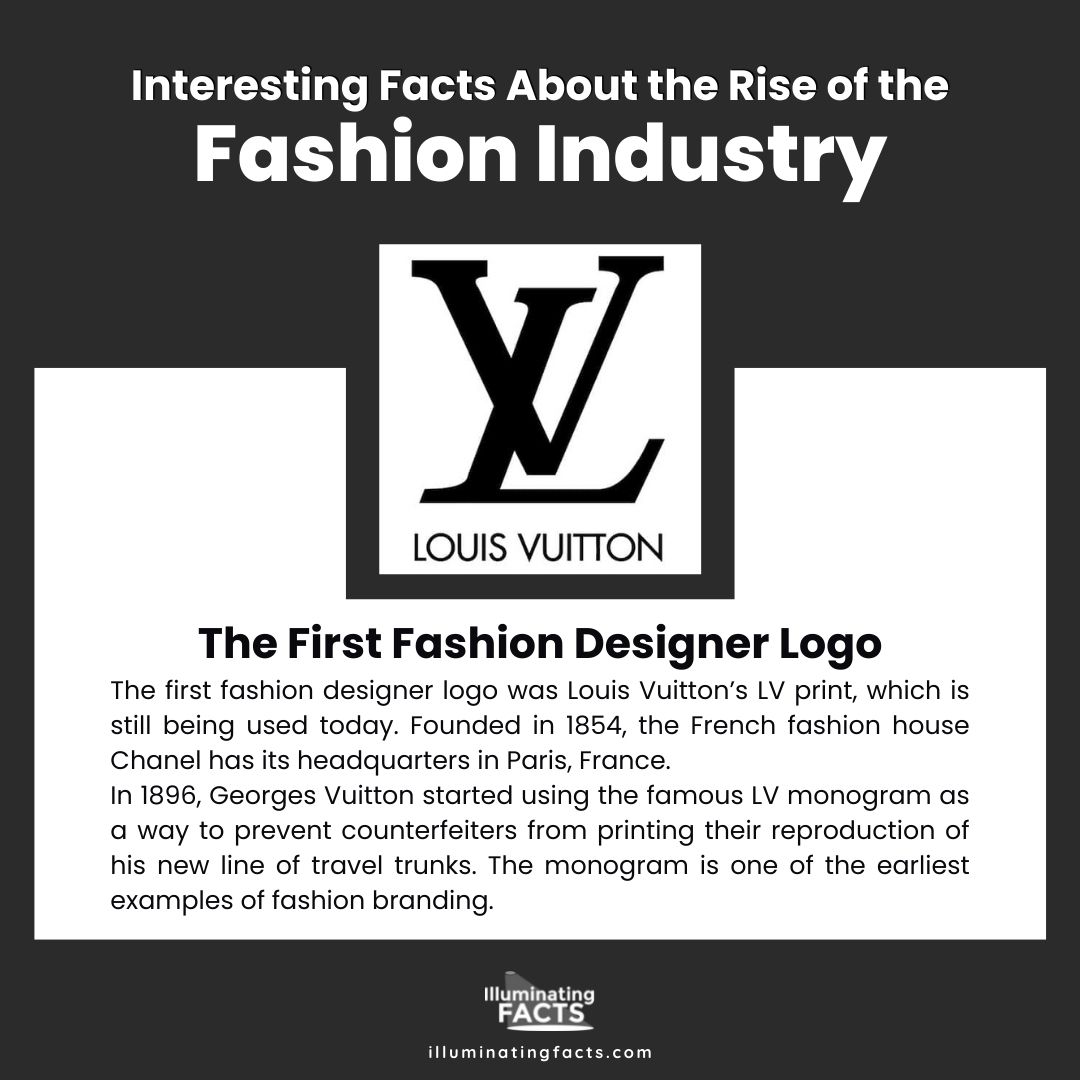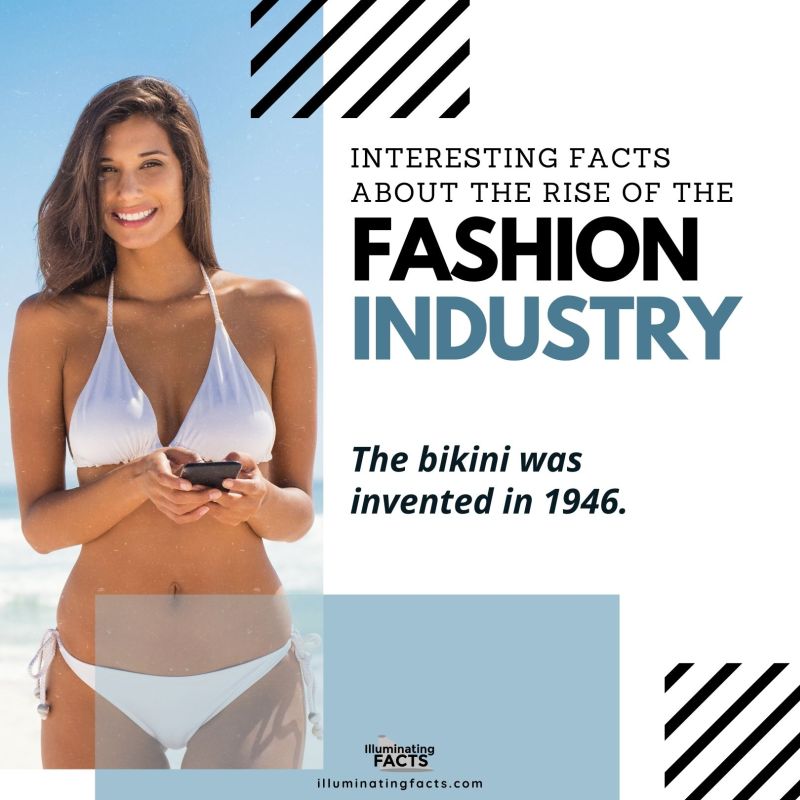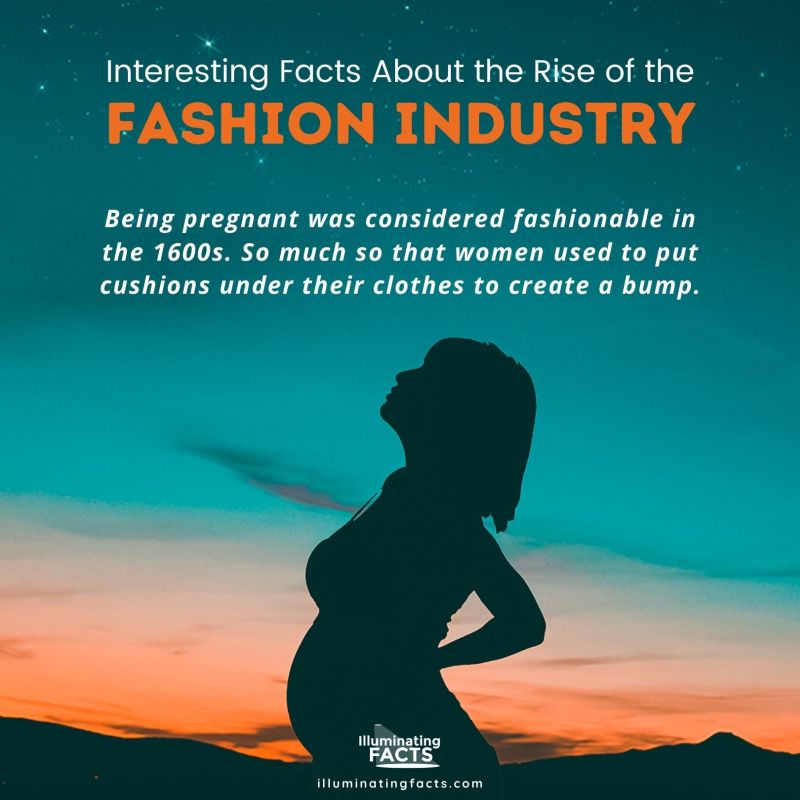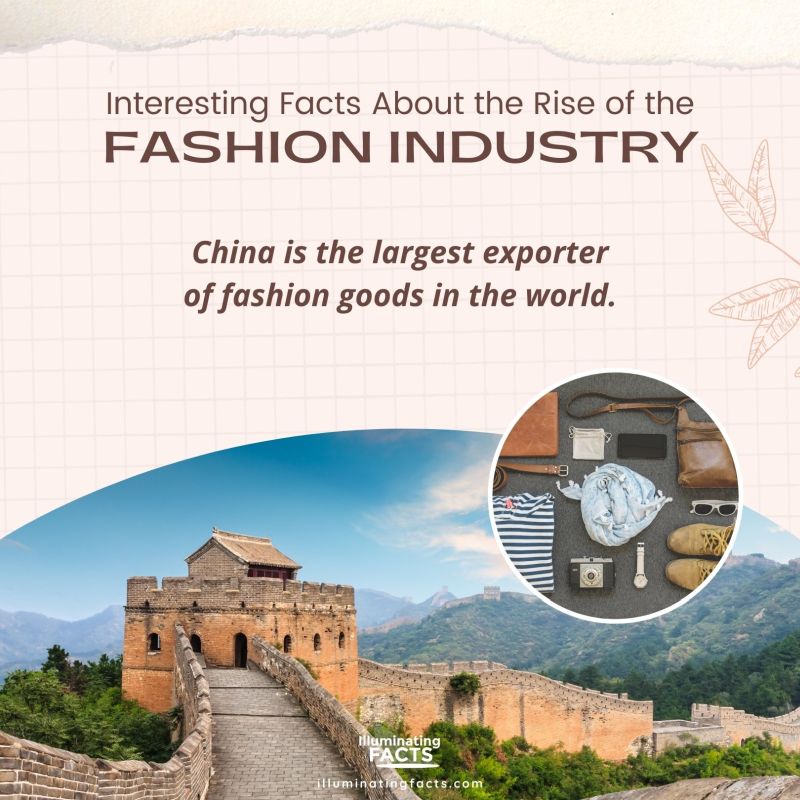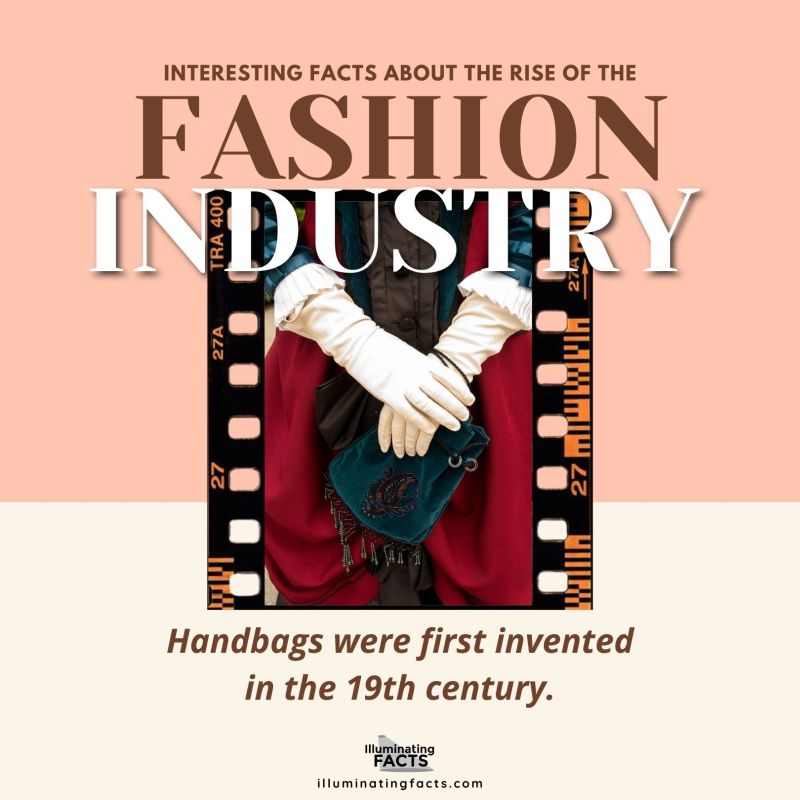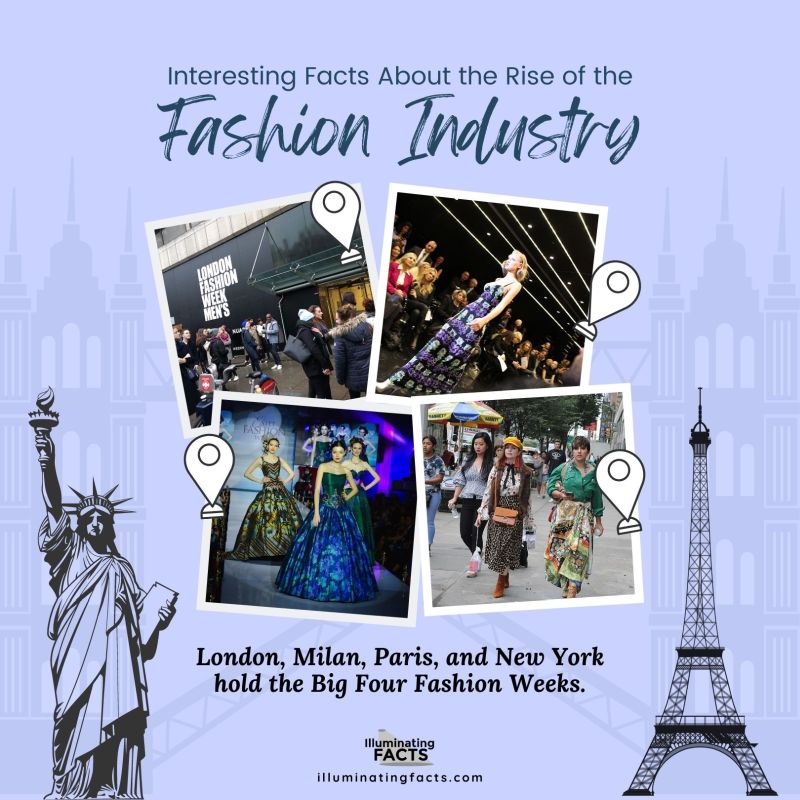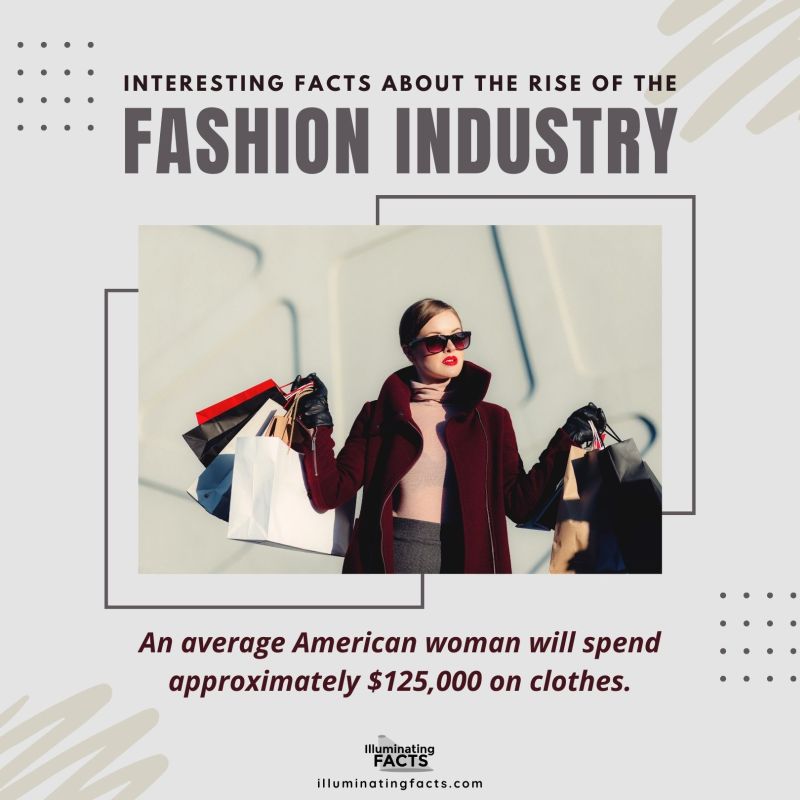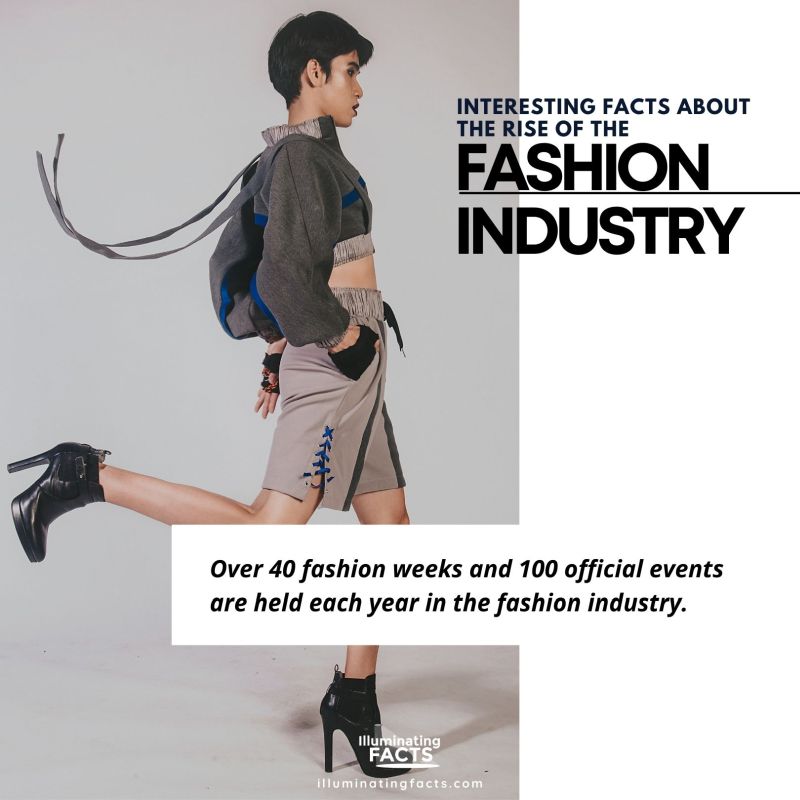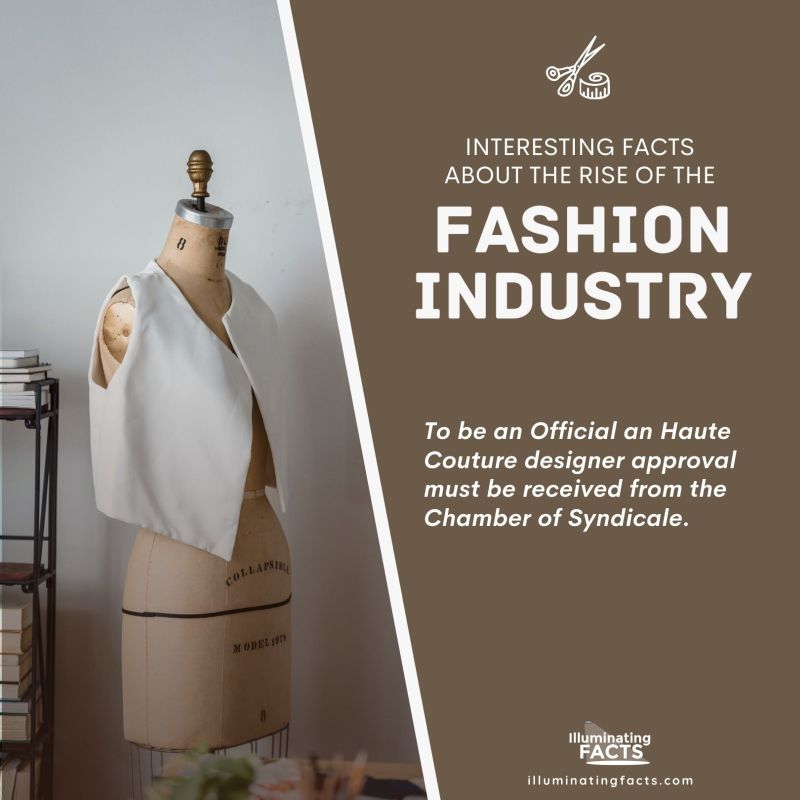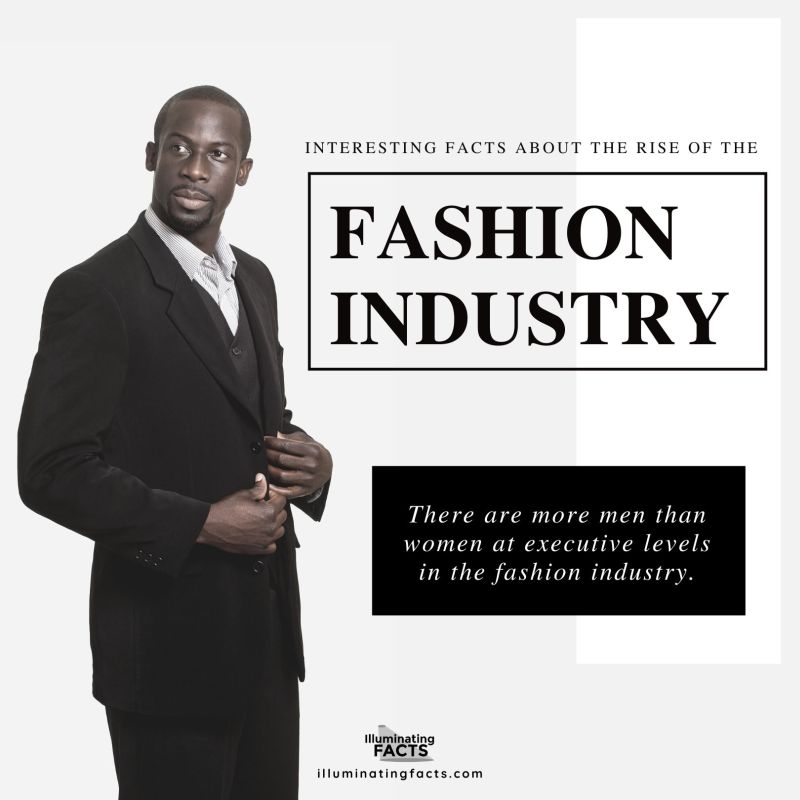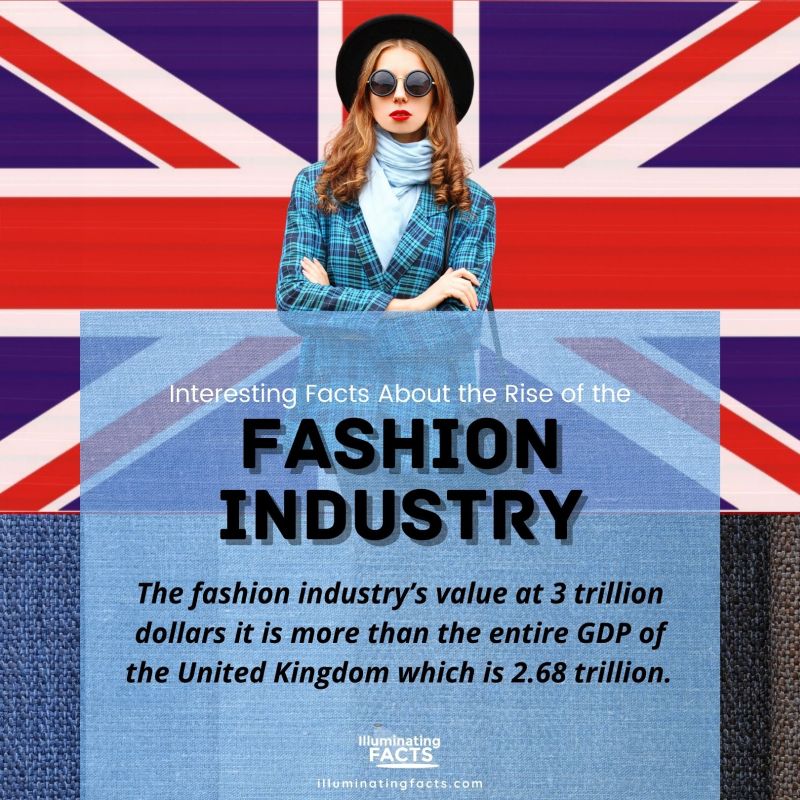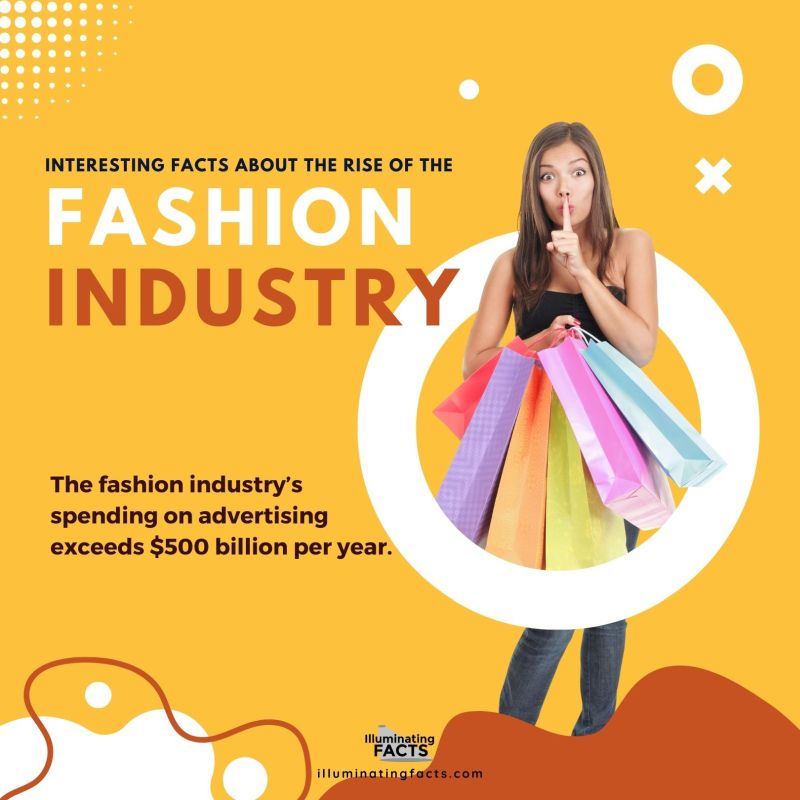1. Rapid Growth
Did you know that based on the documentary released in 2015 titled “The True Cost,” the world now consumes around 80 billion new pieces of clothes yearly? That is 400% more compared to the consumption twenty years ago. Every year, America generates 82 pounds of textile waste. The production of leather needs large amounts of feed, land, water, and fossil fuels to raise livestock. The tanning process, on the other hand, is among the most toxic in all of the fashion supply chain as the chemicals used in tanning leather are not biodegradable and can contaminate water sources.[1]
This also means that people are now discarding clothing at a much faster rate than before. The average American could discard more than 80 pounds of textile waste per year.[1]
2. A Polluting Industry
You would think that fossil fuels would be one of the main pollutants in the world, but you’d be wrong. The fashion industry is actually responsible for 10% of all carbon emissions, making it the second most polluting industry globally.[5]
When you consider the production process, it’s not surprising that it causes so much damage to our planet. A typical t-shirt takes over 700 gallons of water to make.[6]
The dyeing and finishing aspect of the fashion industry is a major cause of climate change. These are among the most polluting manufacturing and industrial processes on the planet, contributed at least 3 percent to global carbon dioxide emissions as a whole. By 2050, this contribution is likely to go over 10 percent. This is a higher contribution than the aviation and shipping industries combined. Moreover, the CO2 produced by these processes of the fashion industry contribute more than 20 percent of all global water pollution. [20]
3. The Average Number of Jeans
Based on research and survey done in the United States, an average woman owns 7 pairs of jeans, while an average man owns 6 pairs. That sounds too many, but despite that, most people only really wear 4 out of the pairs that they own. There could be a few reasons behind owning this much, such as weight fluctuations.[2]
4. The Popularity of T-shirts
Every year, two billion t-shirts are being sold, making them among the most popular clothing items in the world.[3] These clothing items are probably so popular because they are affordable and also comfortable.
5. The First Fashion Magazine
“Gynasceum, sive Theatrum Mulierum” was the first known published fashion magazine in the world. It was published in 1586 by Josse Amman, a Swiss painter. The name of the magazine meant “Theater of Women.” It was reproduced by engraving the female costumes of all the nations of Europe.[4]
6. The Start of Levi’s
Levi’s is a veteran jeans brand that has been able to make a distinctive place of its own in the world of merchandise as people associate the brand with a definite status symbol. It is an American company founded in 1853 by Levi Strauss. Through around 2,800 company-operated outlets with headquarters based in San Francisco in the United States, it was able to spread its network in the international market.[5]
The first pair of Levi’s jeans was patented in 1873. These were mainly meant for California miners, who needed strong pants that could withstand their tough working conditions. The pants were originally called “waist overalls,” but the name was later changed to “jeans,” which is a derivation of the French word for Genoa, Italy. [21]
7. Ralph Lauren’s Real Name
The original name of Ralph Lauren is Ralph Rueben Lifshitz. He’s an American fashion designer who developed his brand around the idea of an elite American lifestyle. He was able to build one of the most successful fashion empires in the world.[22]
8. The Red Ruby Slippers from “The Wizard of Oz”
Dorothy’s red ruby slippers played a major role in classic movie “The Wizard of Oz’. For the movie’s 50th anniversary, Harry Winston jewelers created a pair like the ones that Judy Garland wore while playing Dorothy. Under the directions of Chairman Ron Winston, the company used real rubies for these slippers.
At a size 4, each shoe had a total of 2,329 rubies and diamonds. Around 1,500 carats of rubies and 25 carats of diamonds were utilized in this footwear. [7]
It was part of a private collection and is still in good condition. However, even the original was not valued as high as the remake of it, which was titled the “Harry Winston Ruby Slippers.” It was sold at an auction for $3 million.
9. Louis Vuitton Burns Excess Stock
Louis Vuitton is one of the brands that work with a strict business model. With this, any products that go unsold each year are quite literally burnt to pieces. This practice has actually been adopted by lots of luxury brands. Also, they specifically burn bags in the US owing to a duty drawback law. Apparently, if something is imported into the US with duty having been paid, then afterward destroyed, the duty payments can be reclaimed.
Though, this has been denied by Louis Vuitton, who claims they only burn defective products; however, some evidence suggests otherwise.[23]
10. New York held the World’s First Fashion Week in 1943
The very first press week was held in 1943. The idea behind it was simple – a central location, originally the Plaza Hotel, would be the hub for New York’s most influential press figures to see the latest collections from American designers in one place.
It was actually just a press-only event meant to show off designs ahead of World War II. Before that, Americans mostly relied on the bi-annual fashion presentations in France. When the elite could not travel to France due to the war, they had a show in America instead.[24]
11. An average American in the 1950s spent 11.5% of their income on fashion goods.
Back in the 50s, an average household in the US spent 11.5% of their salaries on clothes. Today, an average American spends 3.5% of their income on fashion goods.[3]
12. The White Wedding Dress Tradition
Queen Victoria was the first person to wear a white wedding dress. When Queen Victoria wore a white dress for her wedding back in 1840, she met with criticism. It was because back then, white was the color of mourning and not a color in which to be wed. Since then, it has become a tradition for all brides to wear white on their big day. [10]
13. The Most Common Manufacturing Materials
Cotton is known as the most popular material in the world. It is a light and soft natural fabric. It is praised for its comfortableness, durability, and versatility. It is also hypoallergenic and breathes well, making it great for various types of clothes, such as dresses and shirts.
Other materials in manufacturing include cotton, linen, polyester, and silk. These products are usually produced using fertilizers, pesticides, herbicides, and other harmful chemicals that are detrimental to the environment and the health of the people who cultivate these materials. [25]
14. Only a Small Percentage of Clothing is Recyclable
The fashion industry is also one of the most wasteful in the world and responsible for 10% of all carbon emissions. Only 12% of the material used for clothing is recycled. [11]
The volume of clothes Americans throws away every year has doubled in the last 20 years. From 7 million, it became 14 million tons. In fact, in 2018, 17 million tons of textile waste ended up in landfills. That is 5.8% of the total MSW generation in that year. It can take more than 200 years for textiles to decompose in landfills.[28]
15. Gucci’s “Gucci Genius Jeans” sold for $3,134
At one point, jeans were just for working farmers and mechanics. Today, everyone wears jeans, from business professionals to politicians.
According to the Guinness World Records, the Gucci Genius Jeans is the most expensive jeans in the world. It was a pair of distressed, ripped denim that was priced at $3,134 in 1998. They were almost impossible to find, and the ones that were brought into stores could go for as high as $4,000 each. [12]
Crafted by artisans in Florence, Italy, each pair was made from hand-stitched denim. Beaded and embroidered with patterns of flowers and feathers, they fit neatly on the long legs of models.
16. The First Fashion Designer Logo
The first fashion designer logo was Louis Vuitton’s LV print, which is still being used today. Founded in 1854, the French fashion house Chanel has its headquarters in Paris, France.
In 1896, Georges Vuitton started using the famous LV monogram as a way to prevent counterfeiters from printing their reproduction of his new line of travel trunks. The monogram is one of the earliest examples of fashion branding. [13]
17. The Invention of the Bikini
A French designer named Louis Reard introduced the bikini at the Piscine Molitor, which was a popular swimming pool in Paris. It happed on July 5, 1946. The bikini was modeled by a Parisian showgirl named Micheline Bernardini.
It is the smallest swimsuit in the world, and Réard named it after Bikini Atoll, a nuclear test site in the Marshall Islands. The reason for the name was that he believed that the hype surrounding his design would have as much of an impact on people as a nuclear bomb. [26]
18. The Oldest Piece of Clothing
The oldest known piece of manufactured clothing was discovered in the Dzudzuana Cave in Georgia. Archaeologists discovered some old colored flax fibers here, which have been estimated to date back to 36,000 BC.
The first-ever clothes, which were worn around 70,000 years ago, were probably fashioned from animal skins. Sometime between these and the flax fibers, humans learned to make textiles out of plant fibers. [19]
19. Being pregnant was considered fashionable
In the 1600s, the first-ever maternity gown was introduced. It was called the “Adrienne.” The gown featured an empire waist and consisted of folds under the waistline. It is also made of flowing fabric that helped with a growing bump.[29]
20. Manhattan spends the most amount of money on clothing
Among the places in New York City, Manhattan spends the highest amount of money when it comes to clothes. It is the most densely populated place among the five boroughs of New York City. [30]
21. China is the Highest Exporter of Fashion Goods
In 2020, China and the European Union were the top-ranked global clothing exporters with shares of approximately 43.5 percent and 36.5 percent, respectively. China was also the leading textile exporter in the world. [14]
22. The Largest Fashion Companies in the World by Value
For seven years in a row, Nike retains its title as the world’s most valuable apparel firm despite its recent challenges. According to data from Finance PR, the US company had a value of $30.44bn in 2021. [27]
23. The Invention of Handbags
The very first modern-day handbag was envisioned in 1841 by an entrepreneur named Samuel Parkinson. He made it when he noticed that his wife’s purse was too small for her belongings. [15]
In the 20th century, the rise of department stores caused the next evolution in handbags. Department stores began to focus on handbags as a way of showing off their store brands. The more famous the store, the more famous the handbag became. Department stores also began to use handbags as a way of advertising their own products. [15]
24. London, Milan, Paris, and New York Hold the Big Four Fashion Weeks
New York, London, Milan, and Paris are the four major fashion capitals of the world. The four main venues for fashion week are Lincoln Center in New York City, Somerset House in London, The Fiera Milano in Milan, and Grand Palais in Paris.
The biggest fashion weeks in the world are Paris Fashion Week, London Fashion Week, New York Fashion Week, and Milan Fashion week. They are also the most popular, attracting celebrities, the media, top models, designers, and buyers all over the world.
Other cities that host fashion week include Tokyo, Berlin, and Toronto.
25. An Average Woman’s Spending
According to a survey, American women spend an average of $125,000 on clothes over the course of their lifetime. But despite all the money spent on clothing, 60 percent of women say they struggle to find something to wear. [16]
26. Over 40 fashion weeks and 100 official events
In addition to the big four fashion weeks that are very popular around the world, there are many other fashion weeks that are held in other places. In fact, there are more than a hundred fashion weeks that are happening worldwide.[31]
27. Haute Couture Houses
An Haute Couture designer must receive an assent of approval from the Chambre Syndicale De La Couture, and only 14 fashion houses are approved.
The Chambre Syndicale De La Couture is a regulating body that sets standard and determines which fashion design houses meet the criteria to be true haute couture houses. There are only 14 fashion houses that are approved by the Chamber of Syndicale, out of the many designers that we consider haute couture. Even great designers like Giorgio Armani are non-approved applicants.
In the fashion world, an haute couture house is a brand recognized for its luxury goods, original designs, and high prices. There are strict criteria for haute couture houses. Brands must own a showroom in Paris with at least 15 full-time employees, and they must present at least 35 looks in a show twice a year. [17]
28. Mary Phelps invented the modern bra
On November 3, 1914, the bra officially became part of the world. It was the day that the patent and trademark were granted to Mary Phelps Jacobs, and she called it a “brassiere.” [32]
29. There are more men than women at executive levels in the fashion industry.
The 2015 survey by Business of Fashion found out that among the 50 major fashion companies out there, only seven were run by women. In another study called “The Glass Runway,” women were 17% more likely than men to become a top executive in the fashion industry. However, as they surveyed people higher up the corporate order, by the time they got to the level of vice president, men were surprisingly 20% more likely to reach for upper management in the fashion industry than women.[24]
30. The fashion industry’s value is more than the entire GDP of the United Kingdom.
The value of the global fashion industry is 3,000 billion dollars or 3 trillion dollars. It is 2% of the world’s Gross Domestic Product (GDP), while the GDP of the whole UK was 2.68 trillion.[25]
31. Employment for Millions of People
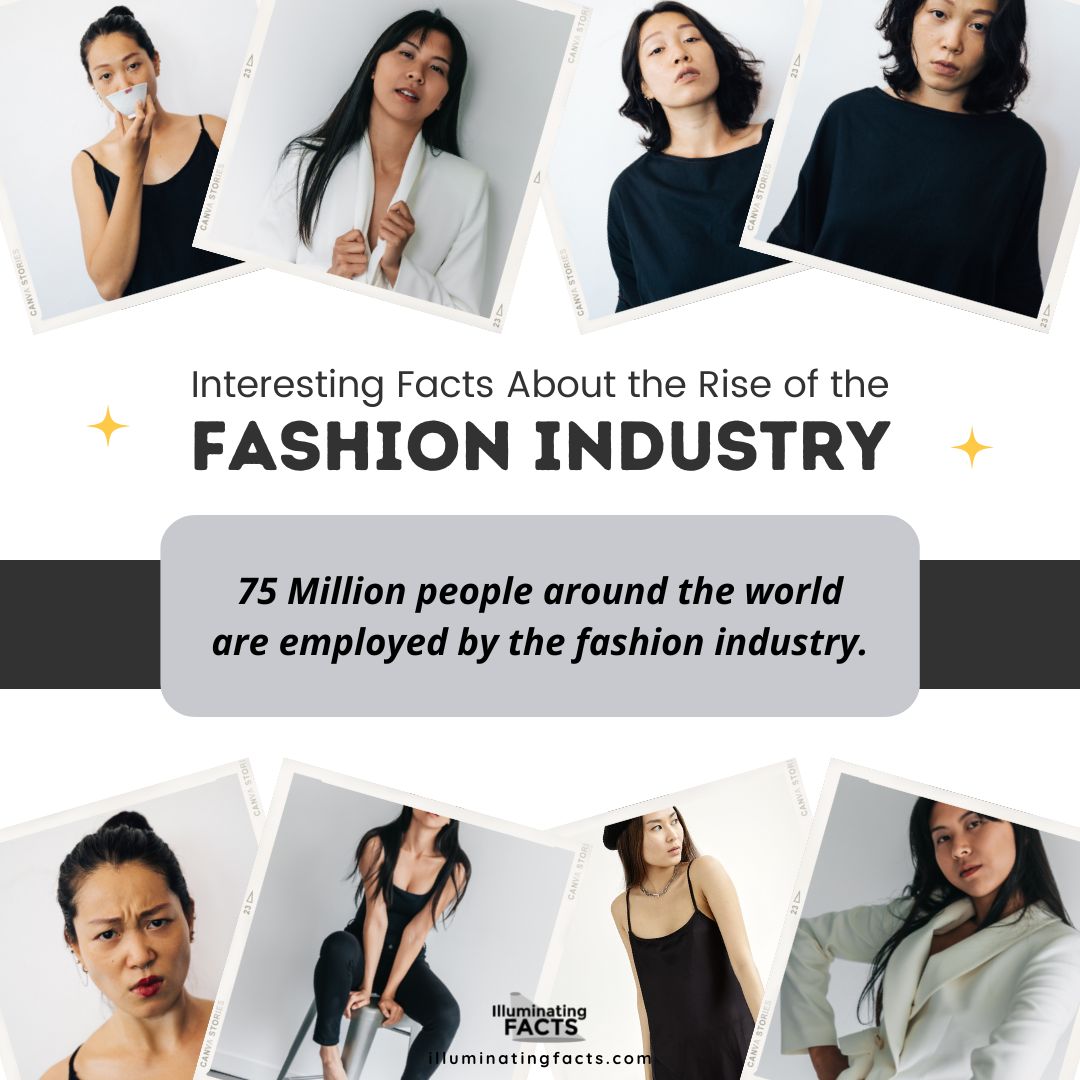
According to The Business of Fashion, “the global apparel market is worth $1.7 trillion annually, with some 75 million people involved in making clothing and footwear around the world”. This makes it one of the biggest industries in terms of revenue and employment opportunities. [18]
In fact, in the United States, around 4 million people work in the fashion industry. That is higher compared to other major sectors, such as the fast-food, auto, and gaming industries.
32. The fashion industry’s spending on advertising
Since the fashion industry has a huge amount of money available, big fashion retailers and as well as smaller ones, spend a lot on trying to entice consumers to buy their products. Annually, more than $500 billion is spent each year on advertising fashion goods. But did you know that the largest fashion retailer, Zara, does not do conventional advertising? It barely even has a marketing department.[33]
References
- Interesting facts about the rise of the fashion industry. (2022, May 13). Illuminating Facts – Interesting Facts, Charts and More!. https://illuminatingfacts.com/interesting-facts-about-the-rise-of-the-fashion-industry/
- Nast, C. (2014, December 9). Do you own too many pairs of jeans? https://www.glamour.com/story/how-many-jeans-owned-average
- Robinson, L. (2022, July 1). 100 fascinating facts about fashion & clothing. The Fact Shop. https://www.thefactshop.com/fashion-facts/100-fashion-facts
- The history of the magazine. (2013, April 18). Tumblr. https://historyofthemagazine.tumblr.com/post/48243012885/the-birth-of-the-magazine-1586-first-magazine
- Paddison, L. (n.d.). How carbon might go out of fashion. BBCpage. https://www.bbc.com/future/article/20211105-how-carbon-might-go-out-of-fashion
- Did you know that one T-shirt guzzles over 700 gallons of water?(2020, January 11). Goodfair. https://goodfair.com/blogs/nonewthings/did-you-know-that-one-t-shirt-guzzles-over-700-gallons-of-water
- Ruby slippers Redux. (1990, January 5). Los Angeles Times. https://www.latimes.com/archives/la-xpm-1990-01-05-vw-130-story.html
- GLOBAL GARMENT AND TEXTILE INDUSTRIES Workers, Rights and Working Conditions. (2019). Solidarity Center. https://www.solidaritycenter.org/wp-content/uploads/2019/08/Garment-Textile-Industry-Fact-Sheet.8.2019.pdf
- Fashion e-Commerce in the United States. (2022, March 28). Statista. https://www.statista.com/topics/3481/fashion-e-commerce-in-the-united-states
- Nast, C. (2018, April 3). How 20-Year-Old Queen Victoria forever changed wedding fashion. Vanity Fair. https://www.vanityfair.com/style/2018/04/queen-victoria-royal-wedding
- Beall, A. (n.d.). Why clothes are so hard to recycle. BBCpage. https://www.bbc.com/future/article/20200710-why-clothes-are-so-hard-to-recycle
- Craciun, V. (2022, March 22). The 10 most expensive gucci items ever sold. Luxatic. https://luxatic.com/the-10-most-expensive-gucci-items-ever-sold/
- Cipollini, M. (2021, December 15). The stories behind the most famous luxury fashion logos. The Study. https://1stdibs.com/blogs/the-study/fashion-logos/
- Share in world exports of the leading clothing exporting countries 2020. (2021, July 30). Statista. https://www.statista.com/statistics/1094515/share-of-the-leading-global-textile-clothing-by-country
- A brief history of purses. (2021, June 26). Love Your Leather. https://www.loveyourleather.ca/leather-blog/history-of-purses/
- Jeannot, D. (2012, July 5). Women spend $125,000 on clothes over lifetime: Study. NBC 6 South Florida. https://www.nbcmiami.com/news/local/women-spend-125000-on-clothes-over-lifetime-study/1899452
- Couture 101: The basics of haute couture. (16, January 25). Observer. https://observer.com/2016/01/couture-101-the-basics-of-haute-couture/
- Apparel market worldwide. (2022, March 2). Statista. https://www.statista.com/topics/5091/apparel-market-worldwide/#topicHeader__wrapper
- Georgia believed to be place where first clothing was invented. (2016, October 10). GeorgianJournal. https://georgianjournal.ge/discover-georgia/32954-georgia-believed-to-be-place-where-first-clothing-was-invented.html
- Dyeing for fashion: Why our clothes are so bad for the environment. (2022, February 26). euronews. https://www.euronews.com/green/2022/02/26/dyeing-for-fashion-why-the-fashion-industry-is-causing-20-of-water-pollution
- Lovelace, T. (2021, August 23). History of denim & the origin of jeans. Hawthorn. https://www.hawthornintl.com/history-of-denim
- Ralph Lauren. (n.d.). Encyclopedia Britannica. https://www.britannica.com/biography/Ralph-Lauren
- Solberg, F. (2020, August 18). Why Louis Vuitton burns bags. Medium. https://medium.com/culturistique/why-louis-vuitton-burns-bags-f56583cb2720
- Cohen, L. (2014, August 14). Celebrating style: The history of fashion week. Marie Claire Magazine. https://www.marieclaire.com/fashion/a10274/history-of-fashion-week
- Erdmann, G. (2018, May 15). Most common fabrics that are used in clothing. Medium. https://medium.com/@gerterdmann/most-common-fabrics-that-are-used-in-clothing-af6f53ad2103
- A&E Television Networks. (2010, March 3). Bikini introduced. HISTORY. https://www.history.com/this-day-in-history/bikini-introduced
- (2022, May 31). Nike tops world’s most valuable brands list, followed by Vuitton. The Fashion Law. https://www.thefashionlaw.com/nike-tops-most-valuable-brands-list-dior-claims-strongest-title/
- Brown, R. (n.d.). The environmental crisis caused by textile waste. Recycling & Waste Management Services For Business | RoadRunner. https://www.roadrunnerwm.com/blog/textile-waste-environmental-crisis
- The evolution of maternity style. (2021, February 27). ELLE. https://www.elle.com/fashion/personal-style/g28423/maternity-style-evolution/
- What city’s residents spend the most on clothes?(2011, November 8). The Cut. https://www.thecut.com/2011/11/washington-dc-resident-shopaholic-clothes-money.html
- Fashion weeks around the world. (n.d.). FashionUnited. https://fashionunited.com/landing/fashionweeks-around-the-world-list/
- Garber, M. (2014, November 3). The first bra was made of handkerchiefs. The Atlantic. https://www.theatlantic.com/technology/archive/2014/11/the-first-bra-was-made-of-handkerchiefs/382283/
- The business of fashion: 7 surprising facts about the fashion industry. (n.d.). Social Media Sun – Rise and Shine. https://socialmediasun.com/the-business-of-fashion-7-surprising-facts-about-the-fashion-industry/

